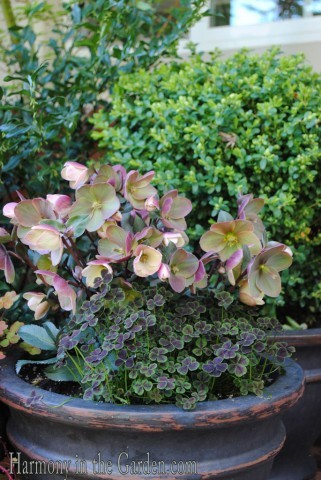 Hellebores are fairly easy to grow here in Northern California, requiring partial shade, well-draining soil, and moderate irrigation. But the best part? They bloom in the dreary days of winter!
Hellebores are fairly easy to grow here in Northern California, requiring partial shade, well-draining soil, and moderate irrigation. But the best part? They bloom in the dreary days of winter!
They come in a staggering range of colors, from the deepest maroon to the palest ivory. They’re typically categorized as either having upright blooms on tall stems (caulescent) or no real stems at all, with downward facing blooms (acaulescent).
The tricky part, in my opinion, is placing those with downward-facing blooms where they can be best appreciated. One solution is to plant them in containers to help elevate the plants to so you can have a better view of their gorgeous flowers.
Even though nursery tags suggest regular irrigation, I’m amazed at how often I see huge clumps of hellebores thriving in neglected gardens, with little to no additional irrigation. These tags also suggest planting them in the shade, but again, I’ve seen them blooming like crazy in full sun.
The taller blooms of Corsican hellebores, however, are one of my all-time favorites, and I have them planted all throughout my garden.
Their lime-green flowers begin opening in early February, lasting for several months and then slowly fading to a mellow shade of olive green.
Long after the flowers are gone, the shapely, serrated foliage lasts throughout the rest of the year providing many more months of seasonal interest.
After visiting the garden of Freeland and Sabrina Tanner this past weekend, I was excited to see this fairly recent introduction called ‘Silver Dollar.’
Its leaves look like they’re brushed with silver, the new growth is tinged purple, and the bright and upward-facing yellow bloom makes for a cheery combination in the garden.![]()
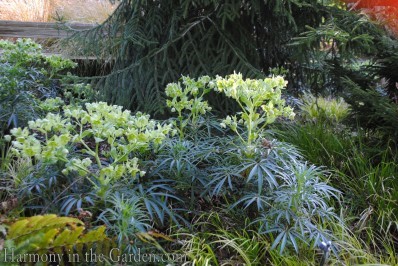
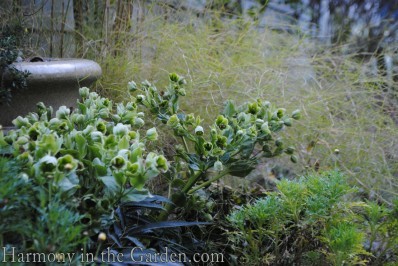
![]()
The Tanners also have a stunning display of the unfortunately named, but nonetheless exquisite, helleborus foetidus (otherwise known as Stinking Hellebore, thanks to the smell emitted by the leaves should they be crushed.) ![]()
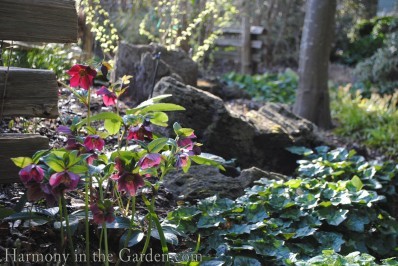
My favorite varieties of hellebores are those with deep, rich hues. These are the colors that just about make my heart stop beating…![]()
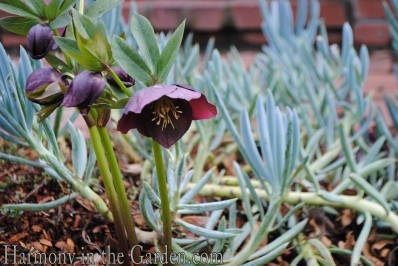
I love this combination that happily resides in my front garden. It’s a helleborus orientalis ‘Red Lady’ that grows among the chalky blue sticks of senecio serpens.![]()
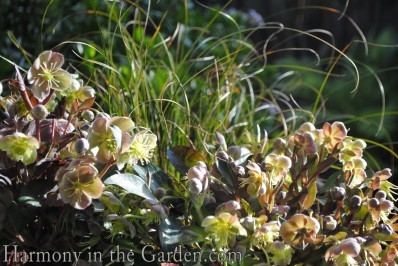
This helleborus lividus is growing in a container on my patio. It’s a dwarf variety, so the container is a great idea, raising it up a bit so I can better appreciate the flowers
It’s a fairly tough hellebore; however it does want warmer summers than I have here in my Zone 9 climate. So far I’ve had good luck with it (knock on wood)![]()
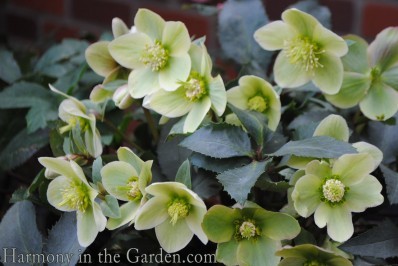
The fine folks at Skagit Gardens sent me this new hellebore to trial, called ‘Monte Cristo.’
I’ve had it for 2 years now, and it’s been a fantastic bloomer, with shorter stems and upright facing, creamy flowers. One of my favorites for the front of the border.
For a more information on hellebores Plant Delights has several informative articles here, filled with everything you’d ever want to know about growing these beauties in your own garden.
And for even more information, here’s another fantastic interview with Judith Knott Taylor (co-author of Hellebores: A Comprehensive Guide)![]()
![]()
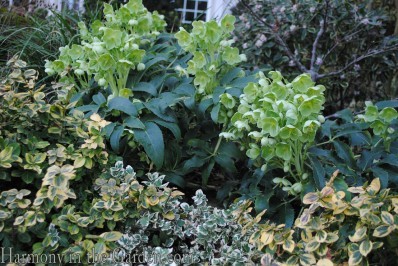
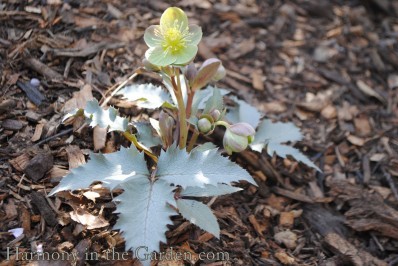






7 Comments
On a recent trip to Pine Knot Farms in Virginia, which specializes in hellebores, I stumbled upon a charming way to view hellebore blooms. Throughout their gardens the owners have placed water-filled vessels in which to float the blossoms. Several varieties floated in each bowl, while a gentle breeze would rearrange the scene every few minutes. It was absolutely gorgeous!
What a wonderful idea, Kim! I’ve seen something similar done at a nursery that specializes in roses. They had a giant board with holes drilled in it, with roses (in water tubes) stuck through the holes. It was a great way to see the whole rainbow of colors in one spot.
Lovely post on hellebores. They are blooming here in Pennsylvania too, a welcome sight after a northern winter. I have been enjoying exploring your blog and website!
Thank you so much, Lynn! I’m glad you stopped by my little blog!
What a coincidence, I was just filling out plant ID for Helleborus orientalis for my landscaping class. I have always admired hellebores but have never tried growing some myself.
Oh, you should definitely give them a try! Personally, I’ve had the best luck with the Corsican Hellebores as they seem to be the toughest and fastest growing in my garden.
Thanks so much! I know what I will be looking for when I go out shopping this spring.